 The dive boat Conception was a death trap. It was a wooden vessel with a single narrow and steep stairway from the lower berthing deck and a small emergency exit hatch. When a fire broke out on September 2, 34 people sleeping on the lowering berthing deck died in the blaze.
The dive boat Conception was a death trap. It was a wooden vessel with a single narrow and steep stairway from the lower berthing deck and a small emergency exit hatch. When a fire broke out on September 2, 34 people sleeping on the lowering berthing deck died in the blaze.
The Conception was also inspected and approved by the US Coast Guard as meeting all requirements of a Subchapter T, Small Passenger Vessel. Recently, an investigation by the Los Angeles Times revealed that the Coast Guard had repeatedly rejected the National Transportation Safety Board’s (NTSB) recommendations for stricter fire safety regulations in this type of vessel.

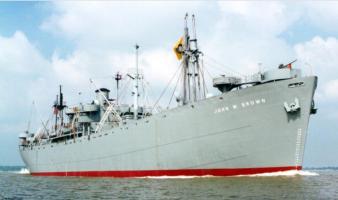 A year ago,
A year ago, 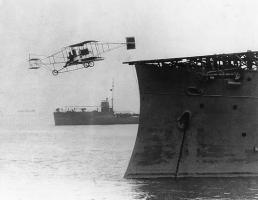 On November 14, 1910, one hundred and nine years ago today, pilot
On November 14, 1910, one hundred and nine years ago today, pilot 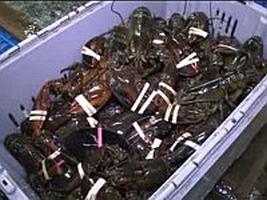 After several near boom years, the Maine lobster fishery is being slammed by the current trade war between the United States and China. From June 2018 to June 2019, after the duties were in place, l
After several near boom years, the Maine lobster fishery is being slammed by the current trade war between the United States and China. From June 2018 to June 2019, after the duties were in place, l In recent weeks there been considerable interest generated by an application for a
In recent weeks there been considerable interest generated by an application for a 
 The videos have been flying across the internet for several years. They are purported to be F-18 gun-camera footage taken in 2004 from
The videos have been flying across the internet for several years. They are purported to be F-18 gun-camera footage taken in 2004 from  Apparently, lightning strikes twice as often over shipping sea lanes than over the ocean as a whole.
Apparently, lightning strikes twice as often over shipping sea lanes than over the ocean as a whole. 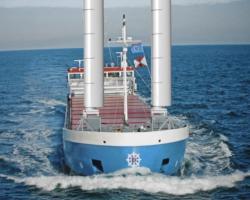 A three-year project to research Wind-Assisted Sail Propulsion (WASP) has been launched in Europe supported by €5.4Mn (about $6 million) in funding provided by the Interreg North Sea Europe program, part of the European Regional Development Fund (ERDF).
A three-year project to research Wind-Assisted Sail Propulsion (WASP) has been launched in Europe supported by €5.4Mn (about $6 million) in funding provided by the Interreg North Sea Europe program, part of the European Regional Development Fund (ERDF).  A year ago we posted about the
A year ago we posted about the  Suspected
Suspected 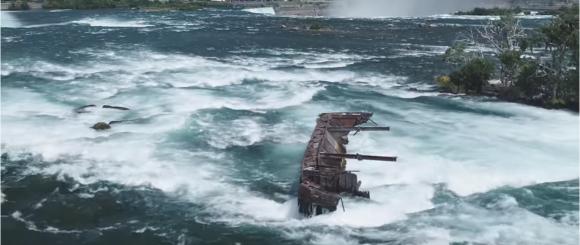 For just over a century, an 80-foot long iron sand-dumping scow has been stuck on a rock in the raging currents of the Niagara River just upriver from the Canadian side of Niagara Falls. After a powerful storm blew through on Halloween night, the scow began to shift and slip downriver toward the thundering falls. The scow has been stuck on a rock shelf in the rapids, roughly 600 meters from the edge, since 1918. It is now 50 yards closer to the precipice.
For just over a century, an 80-foot long iron sand-dumping scow has been stuck on a rock in the raging currents of the Niagara River just upriver from the Canadian side of Niagara Falls. After a powerful storm blew through on Halloween night, the scow began to shift and slip downriver toward the thundering falls. The scow has been stuck on a rock shelf in the rapids, roughly 600 meters from the edge, since 1918. It is now 50 yards closer to the precipice.  The RV Petrel continues its amazing streak of underwater discoveries. Now, it has located the wreckage of what is believed to be the
The RV Petrel continues its amazing streak of underwater discoveries. Now, it has located the wreckage of what is believed to be the 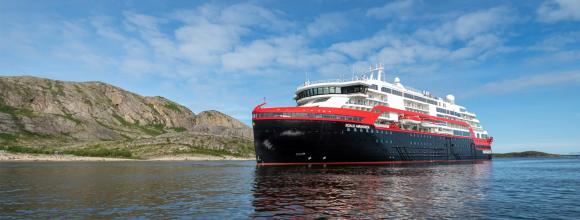
 The so-called
The so-called 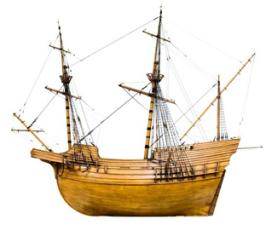
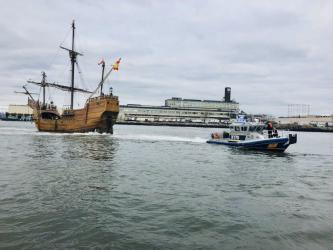 Why is it that virtually any ship with square sails and masts is referred to by the media as a “pirate ship?” Yesterday, a replica of the
Why is it that virtually any ship with square sails and masts is referred to by the media as a “pirate ship?” Yesterday, a replica of the